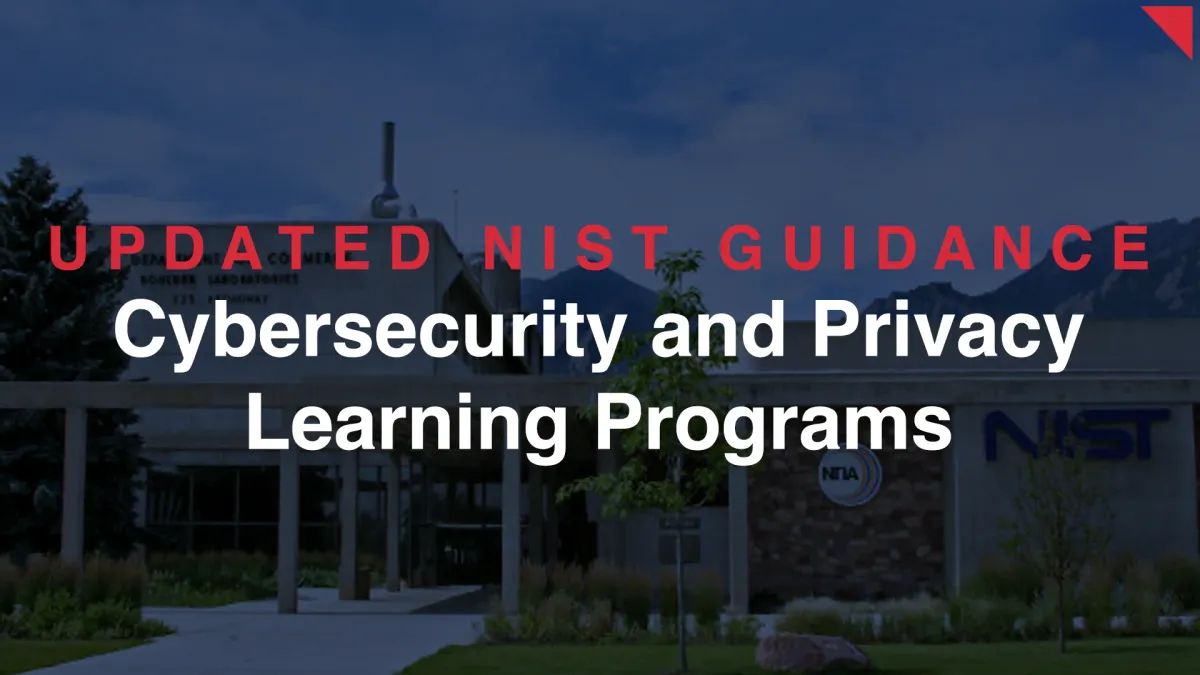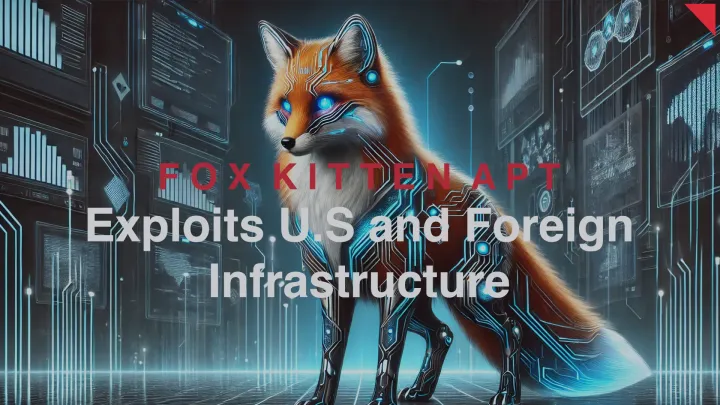NIST Publishes New Guidance on Cybersecurity and Privacy Learning Programs
On September 12, 2024, the National Institute of Standards and Technology (NIST) released Special Publication (SP) 800-50r1, "Building a Cybersecurity and Privacy Learning Program."

Introduction
On September 12, 2024, the National Institute of Standards and Technology (NIST) released Special Publication (SP) 800-50r1, "Building a Cybersecurity and Privacy Learning Program." This revision updates the guidelines for developing comprehensive learning programs that address both cybersecurity and privacy for the Federal Government. The new update is driven by key legislative developments, including the National Defense Authorization Act (NDAA) for FY2021 and the Cybersecurity Enhancement Act of 2014. Additional guidance from the Office of Management and Budget (OMB) and the NICE Workforce Framework for Cybersecurity (NICE Framework) also influenced the changes.
Report Overview
NIST recognized the need to update SP 800-50 to align with modern practices in both security and privacy. Previous iterations had focused primarily on cybersecurity, but recent changes in federal policies, such as OMB Circular A-130, have highlighted the importance of integrating privacy into the information lifecycle. This revision addresses the growing need to protect sensitive data in tandem with securing systems from cyber threats. NIST’s new guidance introduces a model that organizations can use to iteratively improve their learning programs, making them more responsive to both internal needs and evolving external threats. By incorporating guidance from frameworks such as the NIST Cybersecurity Framework and NIST Privacy Framework, SP 800-50r1 establishes a more holistic foundation for cybersecurity and privacy training.
Among the key changes in SP 800-50r1 is the integration of privacy and cybersecurity into a unified learning approach. The document emphasizes that privacy and cybersecurity should be treated as interconnected components of an organization’s broader risk management strategy. This shift addresses the increasing complexity of securing personal information while defending against conventional cyberattacks. Another significant addition is the introduction of a dynamic lifecycle model that allows organizations to continuously adapt their learning programs to address new threats and organizational changes. The revision also encourages the use of standardized maturity models and assessment tools to help organizations evaluate the effectiveness of their training programs and pinpoint areas for improvement.
The focus on fostering an employee-centric culture around cybersecurity and privacy is another critical aspect of the update. NIST aims to encourage employees to not only be aware of cybersecurity risks but also to understand the crucial role privacy plays in their everyday activities. This approach is designed to embed both cybersecurity and privacy into the organizational ethos, ensuring they become central to decision-making processes. Finally, with the release of SP 800-50r1, NIST has withdrawn SP 800-16, a document that previously focused on role-based training models for federal information technology security. The withdrawal signals a broader shift in how cybersecurity and privacy education is approached within federal agencies.
Insights and Analysis
NIST’s decision to merge privacy considerations into cybersecurity training reflects the growing recognition of privacy as an essential element of security. By aligning SP 800-50r1 with key frameworks such as the NICE Workforce Framework for Cybersecurity and the NIST Privacy Framework, the agency ensures that federal learning programs remain relevant in an increasingly complex threat environment. The discontinuation of SP 800-16 marks a significant move away from role-specific training in favor of a more unified approach that acknowledges the interdisciplinary nature of modern cyber threats. This approach requires personnel to develop a broad understanding of both technical and privacy-related risks to effectively manage the challenges they face.
As cyber threats continue to evolve, so must the programs designed to prepare federal employees to address them. NIST’s SP 800-50r1 provides updated, actionable guidance for agencies seeking to build and maintain effective cybersecurity and privacy learning programs. Organizations are encouraged to align their training efforts with this latest revision and use the new lifecycle model to ensure continuous improvement. By adopting this integrated approach, agencies will be better positioned to manage both cybersecurity and privacy risks, ultimately contributing to a more secure federal infrastructure. For more information, the full SP 800-50r1 publication is available on NIST’s website.
Indicators of Compromise (IOC)
No specific Indicators of Compromise (IOCs) were provided in the source material.
MITRE ATT&CK Table
No specific MITRE ATT&CK TTPs were provided in the source material.
References






Comments ()